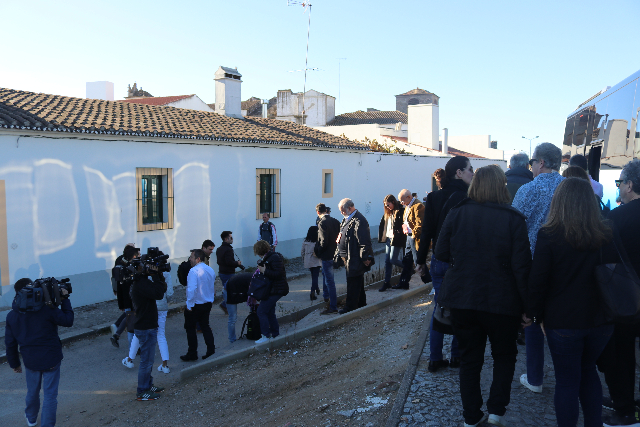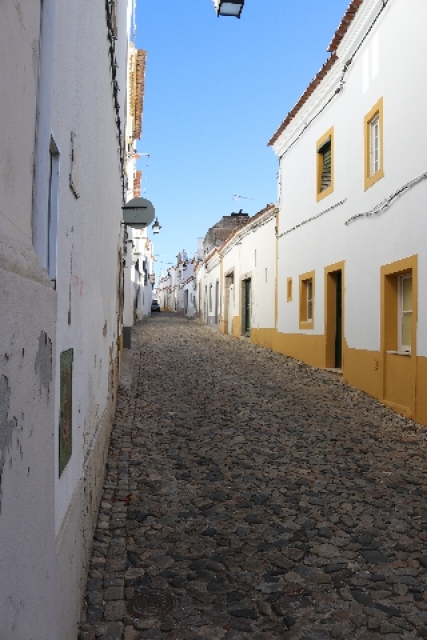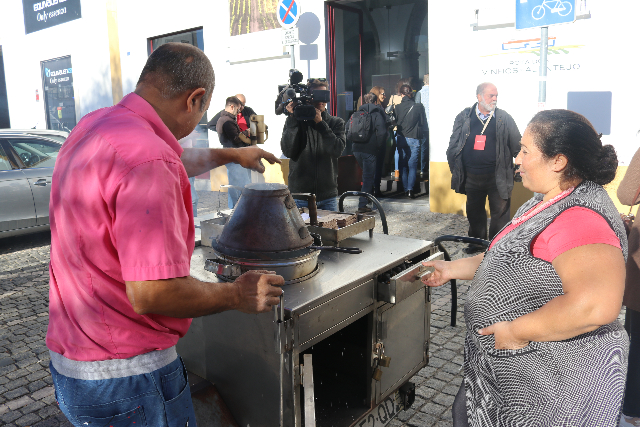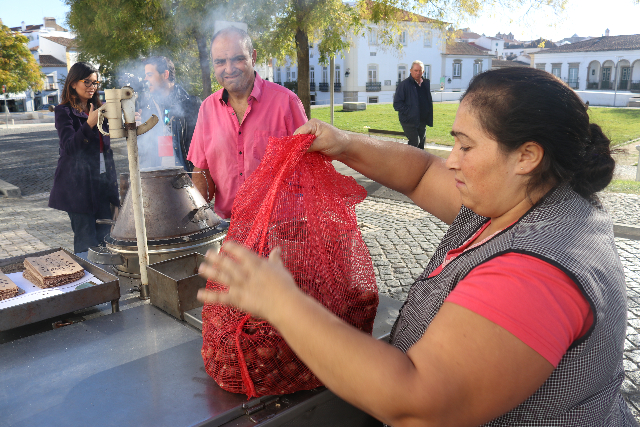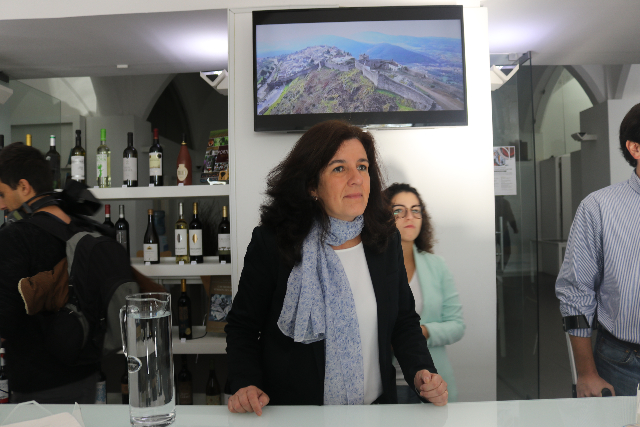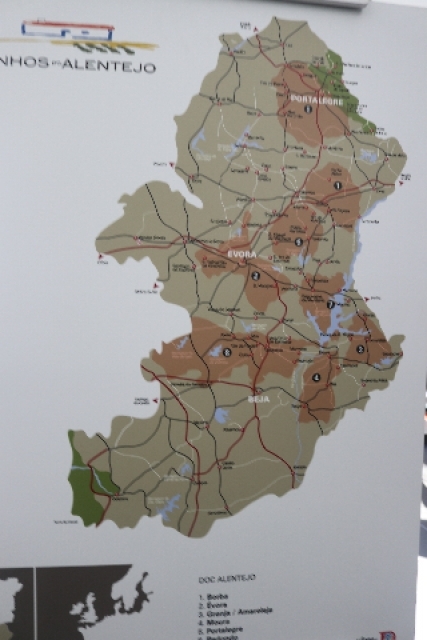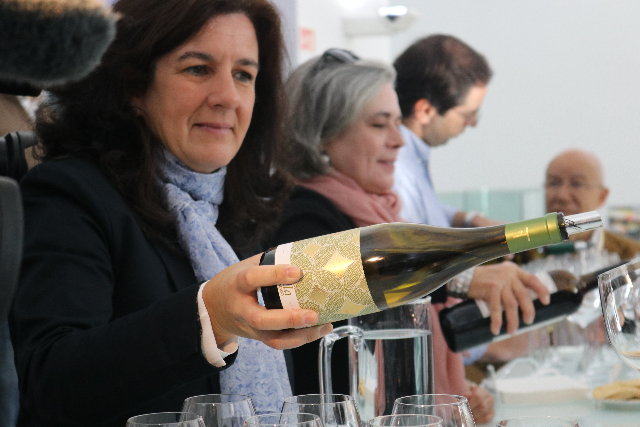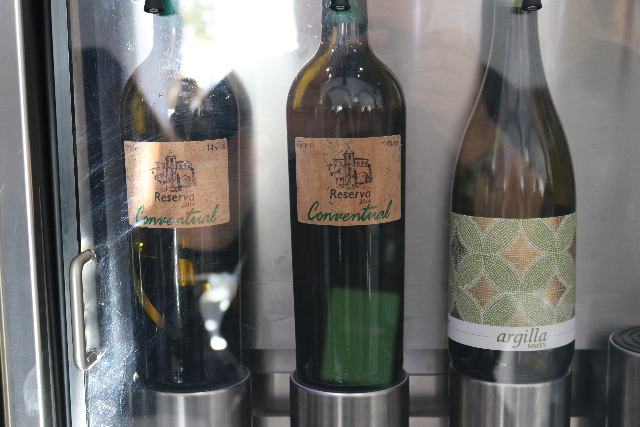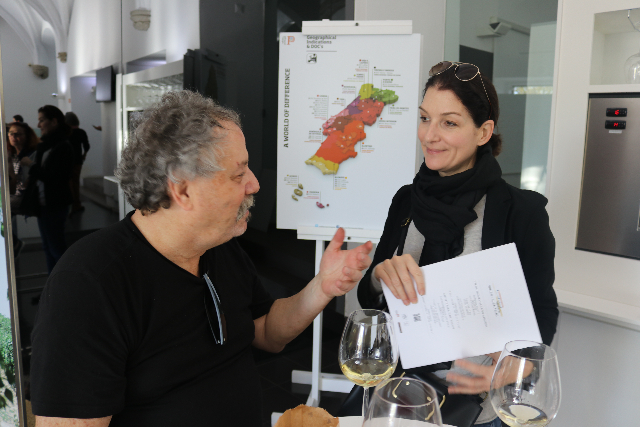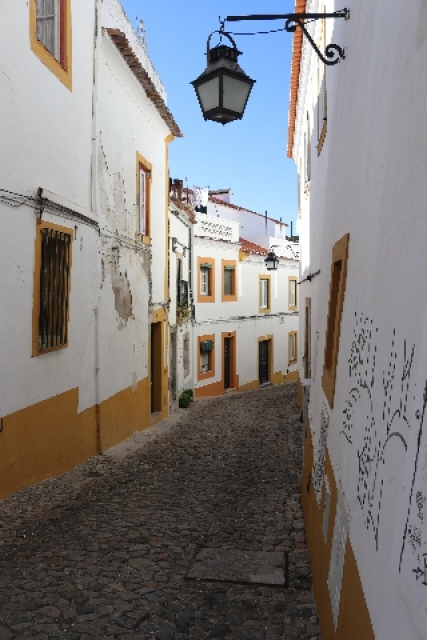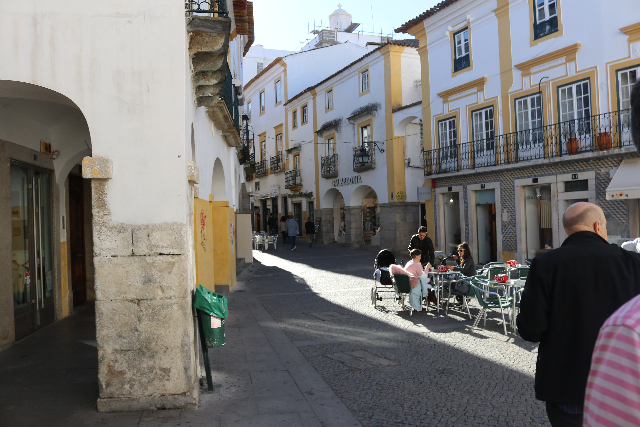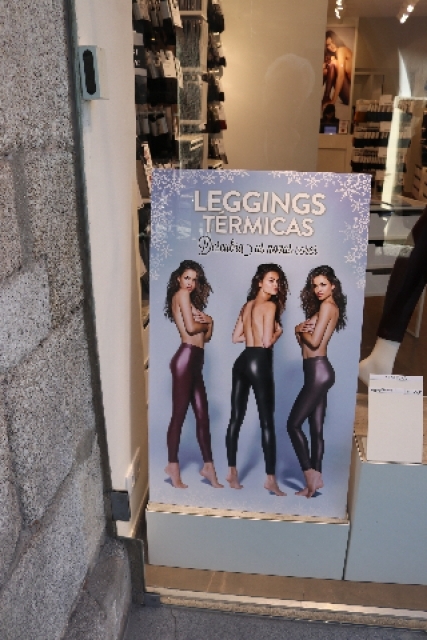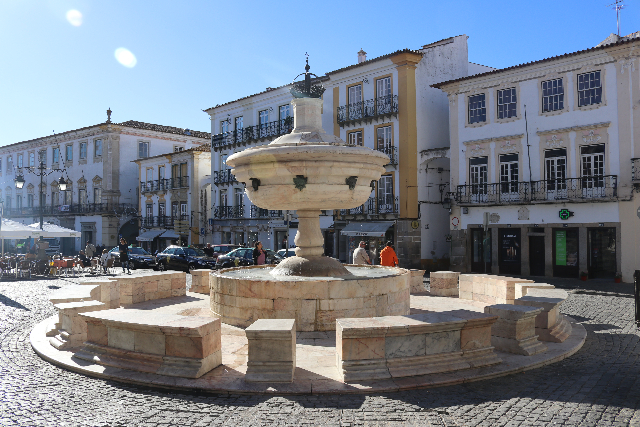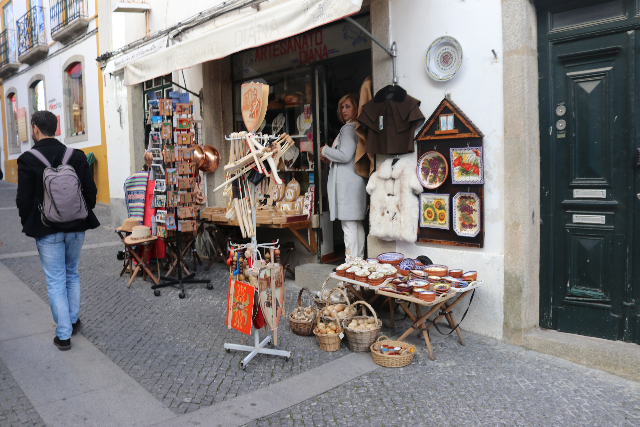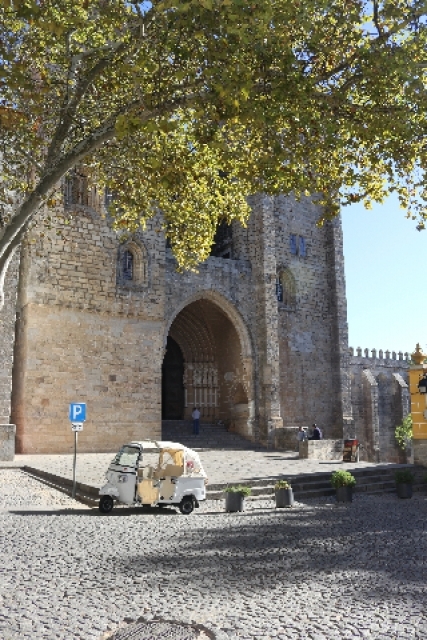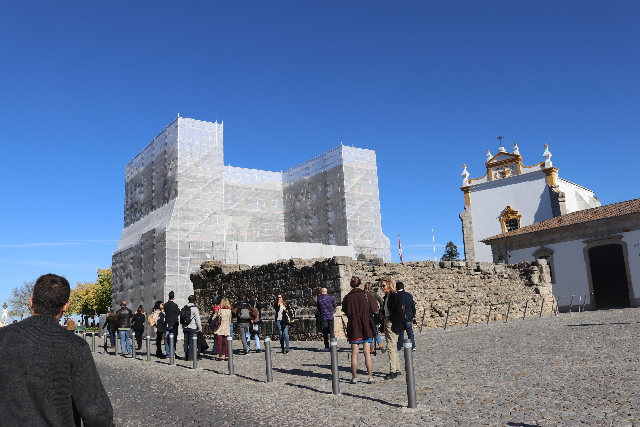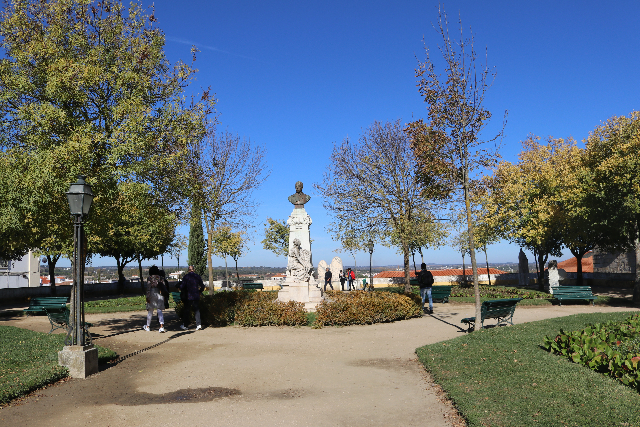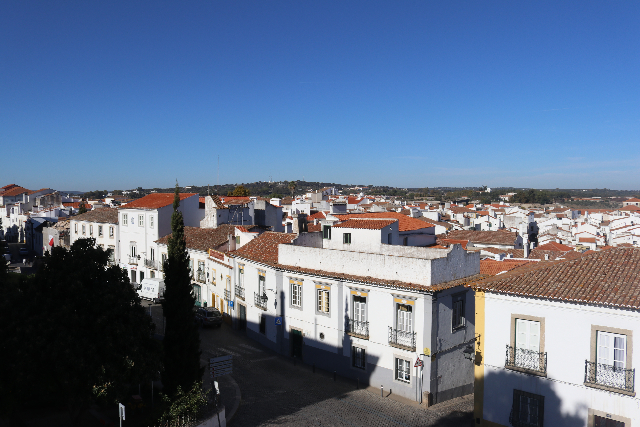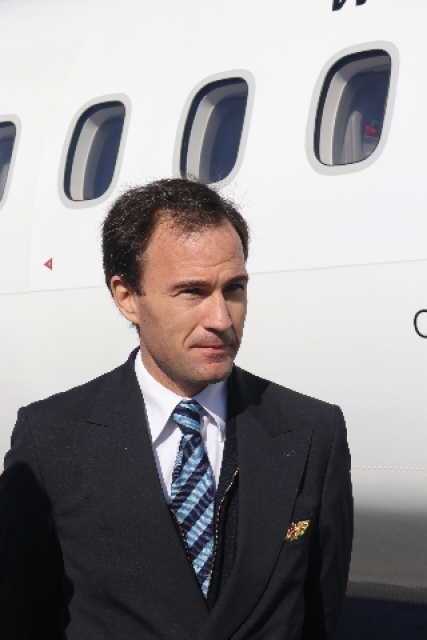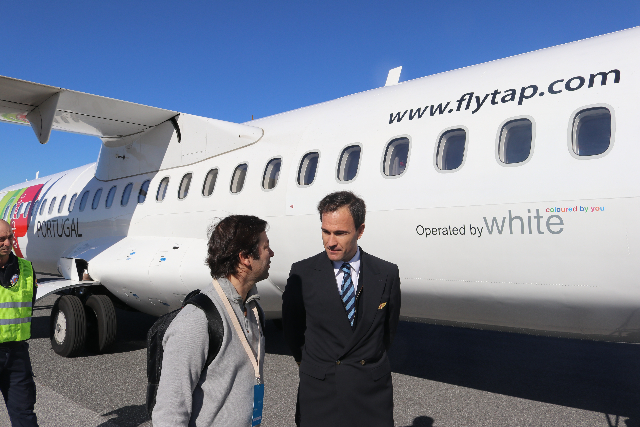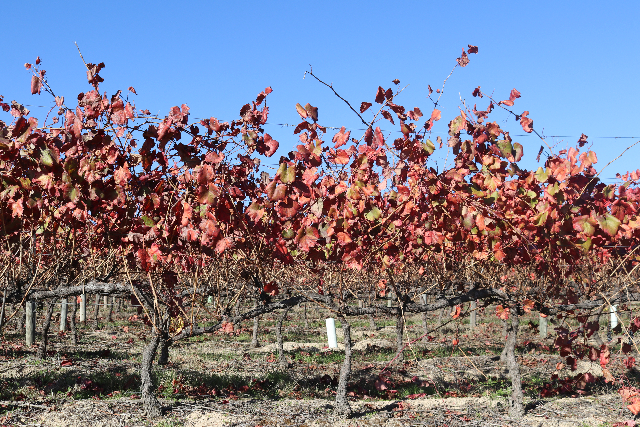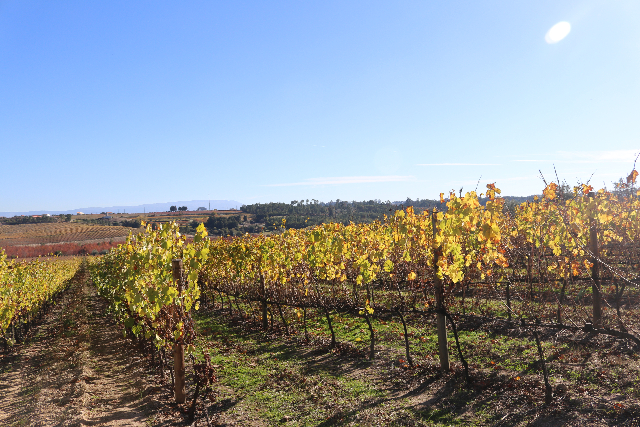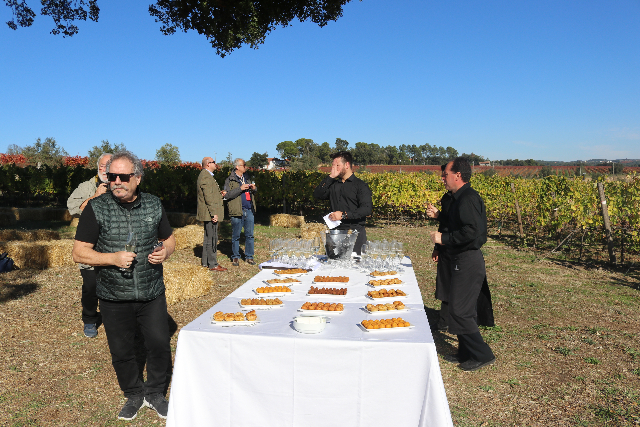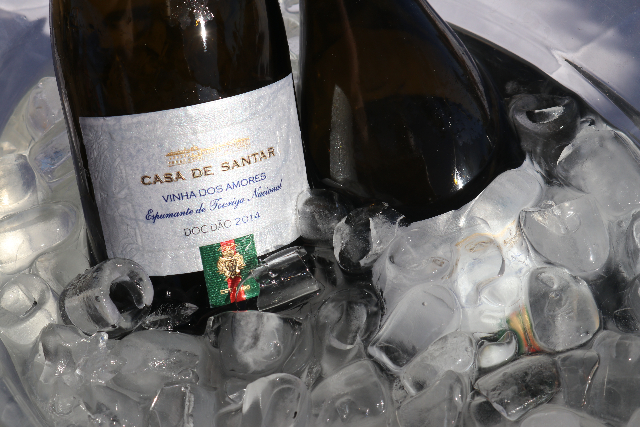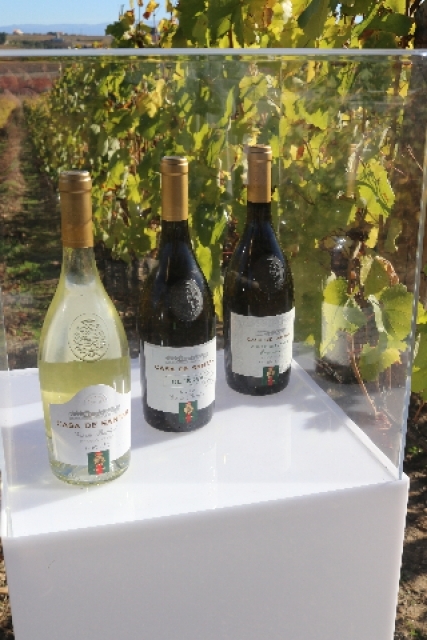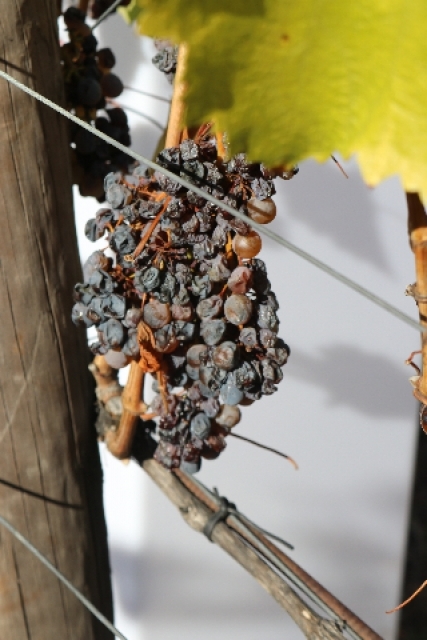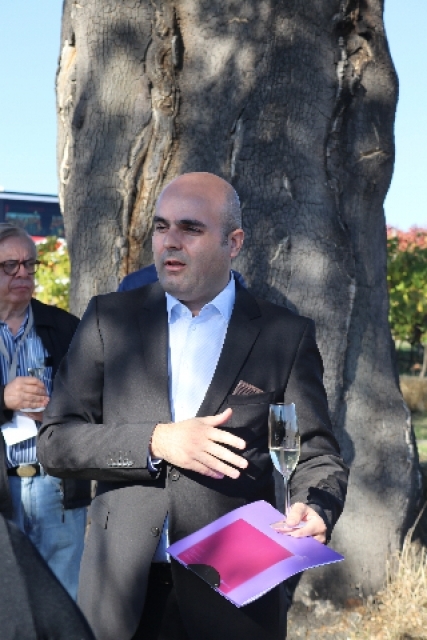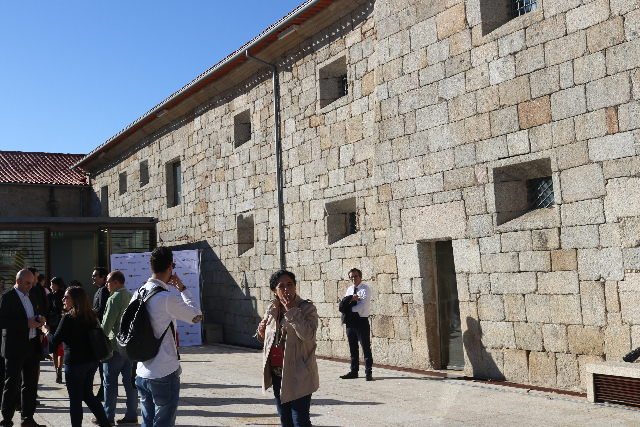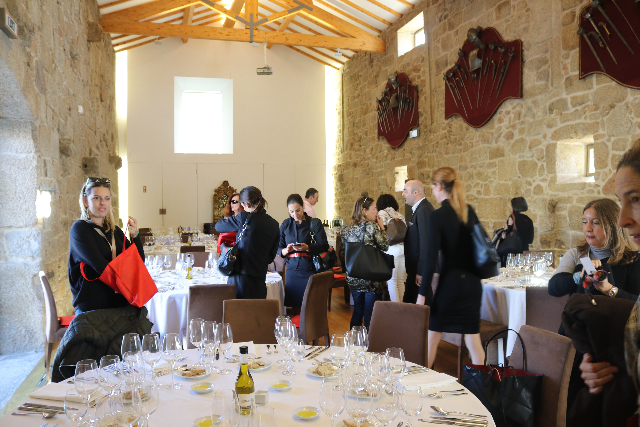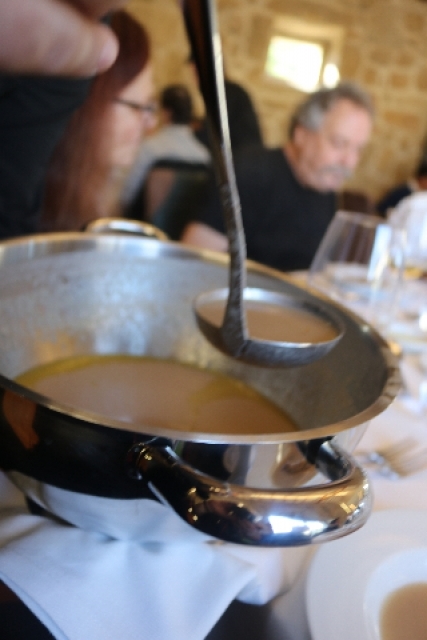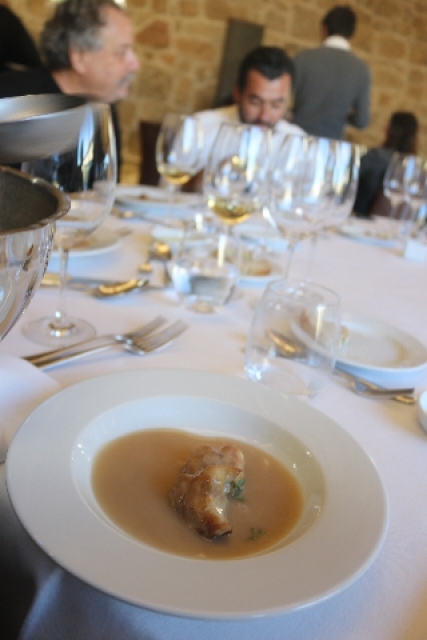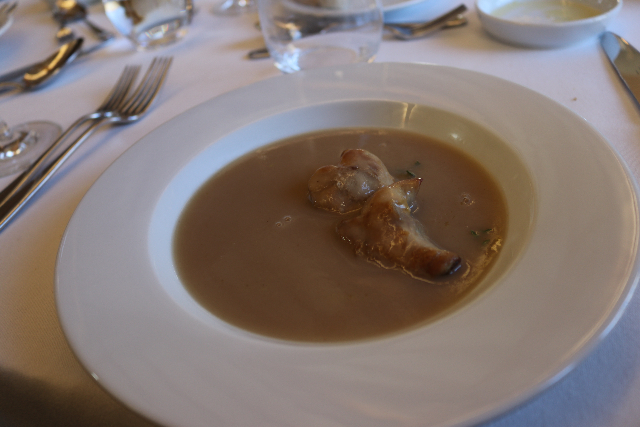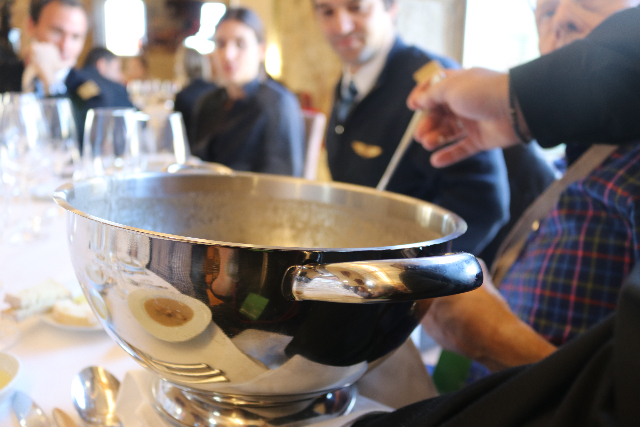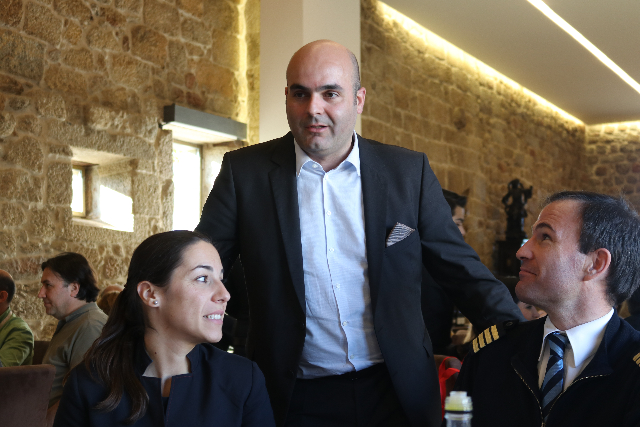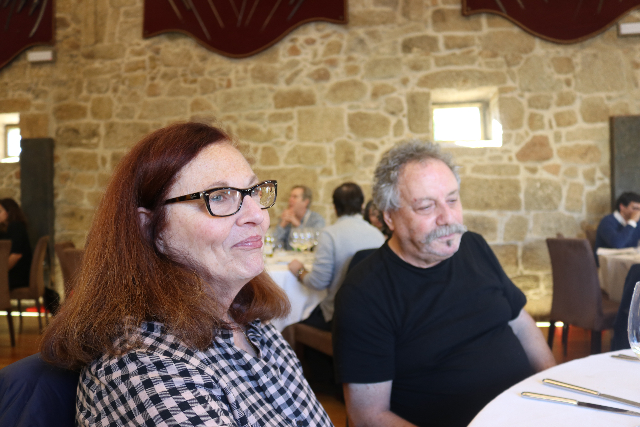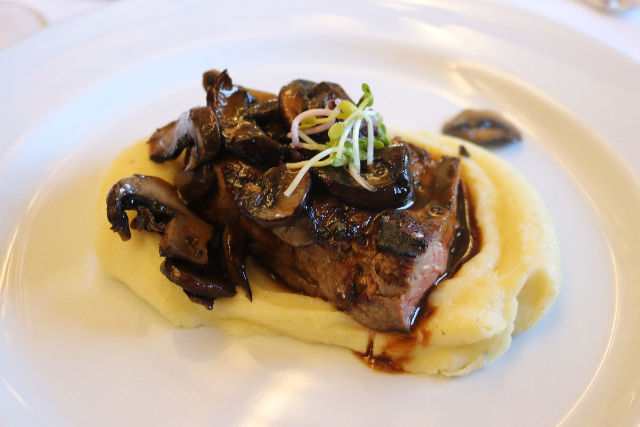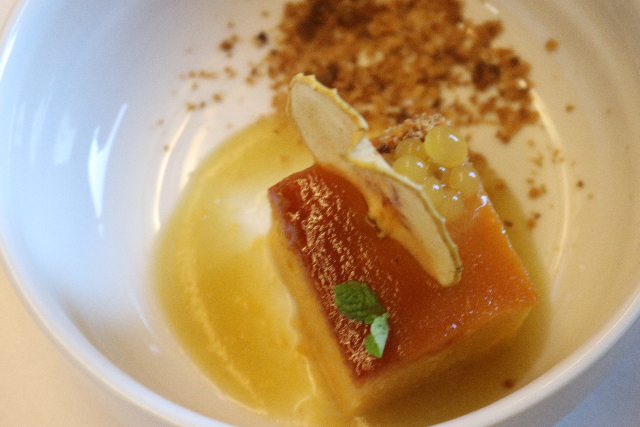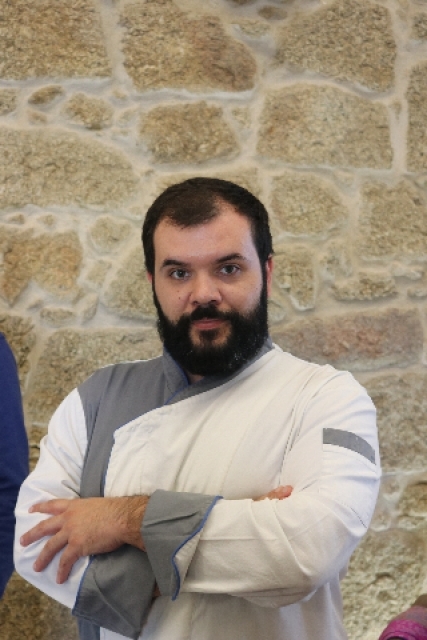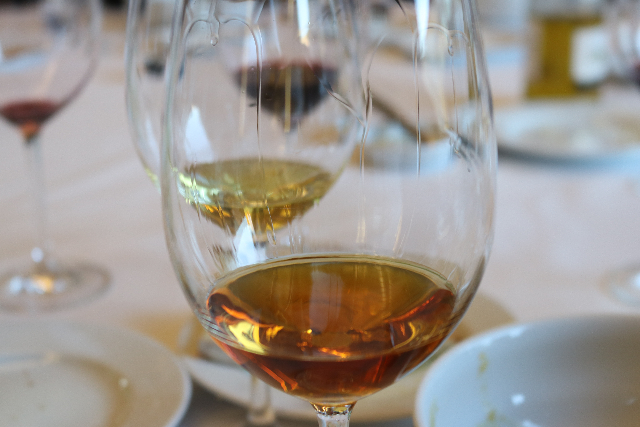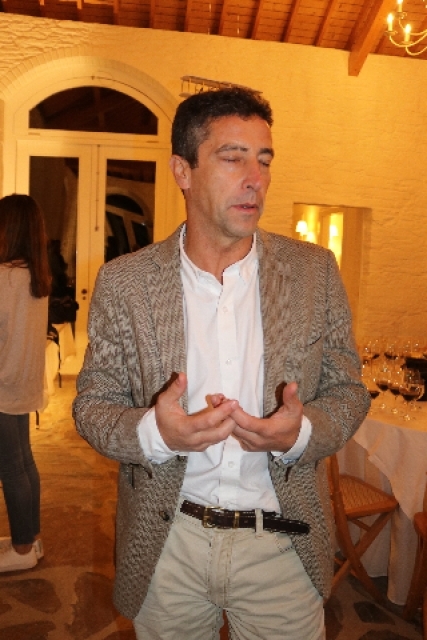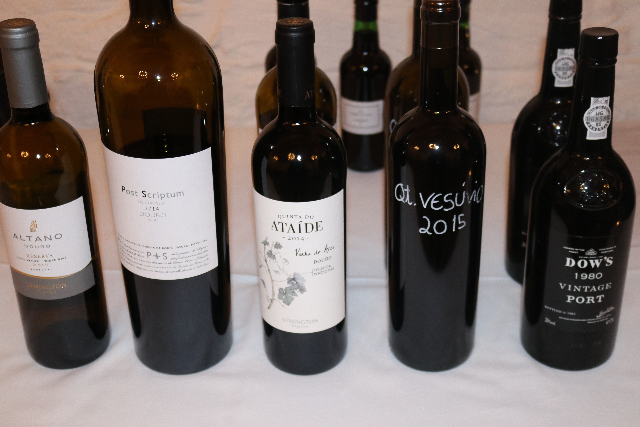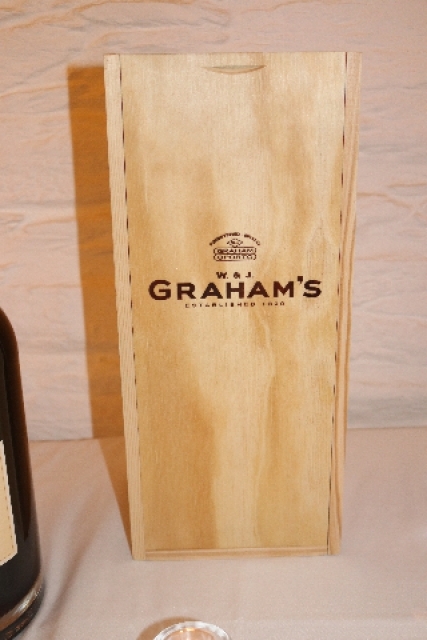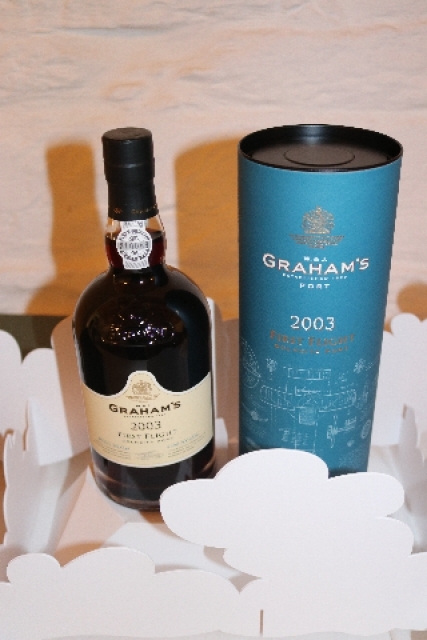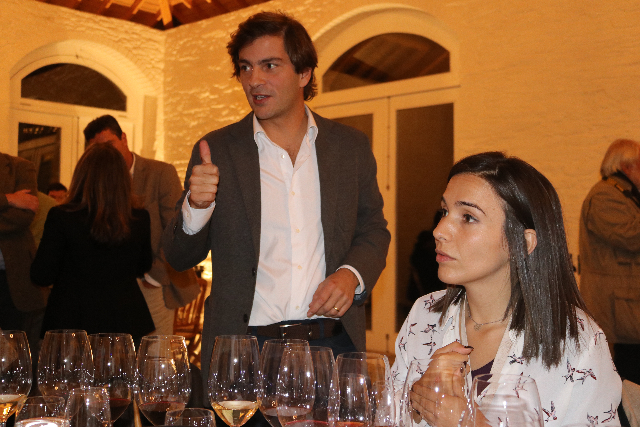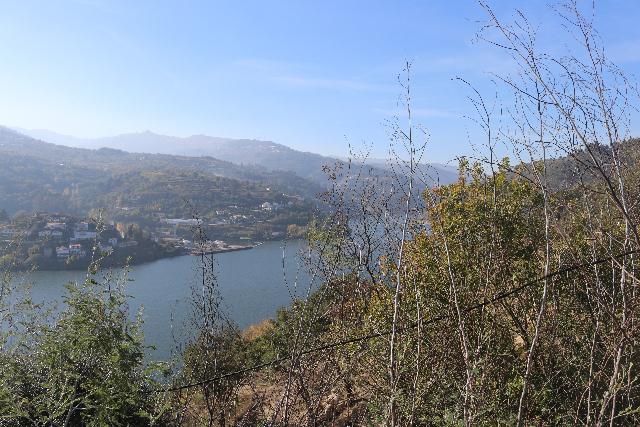TAP Tap Tap in Portugal
Day Three of a Wine Tour
By: Charles Giuliano - Nov 24, 2017
The morning of the TAP Wine Tour it was like herding cats to get everyone on the bus. Exhausted and sleep deprived there was little time for a quick shower and pass at the buffet.
Running late the first top was the small and ancient village in the Alentejo region. We disembarked with a view of the Roman era aqueduct. From there was a walk through narrow streets with glances down colorful alleys.
The destination was the equivalent of a chamber of commerce facility that presents tastings of wines of the region. In front a couple roasted chestnuts which were free for visitors. There was a pouring and discussion of the varietals of the region.
After the tasting the group continued through the village to a square with central fountain and church under renovation. Similarly, there was a Roman temple also under wraps for repair.
From the edge of a terrace there were views of the village below and beyond to the horizon line. The buses had been moved so we were able to descend to continue on.
This phase of the program started late, consumed about 90 minutes, and put the tour off schedule. That resulted in arriving after dark at Douro and missing a sunset with the most spectacular view of all of Portugal. The pace and ambition of the program did not allow for human comforts resulting in late dinners and insufficient bathroom accommodations.
At a local airport we were flown to the Dao region arriving in the fields of Global Wine’s Paco dos Cunhas de Santar. There we were met by Rui Correia who presented and discussed their production of wine.
Compared to the quintas we had visited the setting was rustic with a compelling sense of the reality of producing grapes that result in varieties of wine. He pointed to the features of an expansive landscape and differences of terroir, altitude and soil. There is a tradition of some 200 years and Casa de Santar cultivates 103 hectares.
We started with a sparking wine Espumante Vinna Doa Amores Touriga Nacional. It has a light salmon color with persistent and fine bubbles. We also tasted a white, Casa de Santar Vinna Dos Amores Encruzado Branco, and a red, Casa de Santar Vinna Dos Amores Touriga Nacional Tinto.
For seating there was a circle of hay bales. Our host invited us to write postcards which they would mail to our loved ones. It was a nice touch.
Also I much enjoyed getting close to the vines to examine, photograph and taste the grapes. It was long past harvest and not all of the fruit is used to make wine. The winemakers are ultra selective and taste the grapes as they mature and approach harvesting. We were told that in the past everything was harvested including the waste of skins after pressing. This was then fermented into alcohol with high alcohol content. Currently with an industry focus on fine wine this is no longer the case.
We proceed to a dining and function facility maintained by Casa de Santar. There, in my opinion, we were served a lunch that was the best meal of the tour. We were introduced to the chef. Bravo!
The starter of soup was just incredible. Yes, it could have had more heat, but what an amazing experience. It combined cream of chestnut, thyme and a leg of partridge. From there, with each course, the meal just got better and better.
We next enjoyed a small pie consisting of Beira sausage, spinach, with toasted bread crumbs and a red wine reduction.
As the entrée, be still dear heart, grilled veal with wild mushrooms and a wine reduction was placed over truffled mashed potato. There was a nice char to the perfectly prepared meat.
The dessert was another winner. A small cube expressed distinct flavors in its small terrain. It combined Bravo de Esmolfe apple, cereal crumble, and passion fruit spears. Each bite was glorious including an area with a pungent sprig of strong mint.
This end of the meal was combined with late harvest sweet wine and espresso. For those up to gilding the lily there was an option of Agurdenta Paco Dos Cunhas Vinna de Contador a brandy.
We departed with a rich sense of the rewards and complexities of wines of the Dao region. I will be sure to seek them out at our local high end wine stores.
At what was surely the highlight of the tour, the ancient and renowned Symington Quinta de Bomfim, our host, the elegant and passionate, Jose Alvarez Ribeiro, made no secret that he was annoyed at our arrival after dark, two hours off schedule.
A reception planned for the terrace overlooking the dramatic Douro River, passing through a gorge of low mountains, had to be moved indoors.
Founded in 1882 the Symingtons are a family of Scottish, English and Portuguese descent. Five members of the family run four of the most famous producers of port: Graham’s, Cockburn’s, Dow’s and Warre’s.
With serendipity centuries ago exporters of the fine wines of the unique Douro region added brandy to make them more durable when exporting to Great Britain. Inadvertently, they had created port wine which became a passion of British consumers. They invested in both ends of production and distribution. The British, and their former colonies, remain the primary consumers of fine port. There is a parallel passion for Spanish sherry and Madeira’s sweet wines. But nothing surpasses the perfection of Douro’s superb port wines as our host not only explained but demonstrated.
We were served a spectacular flight of ports topped by the Dow Vintage 1980. That year is rated 10 out of 10. It was just exquisite topped only by the similarly rated and even more explosive 1963 white port that Brad Smith shared with me later in Porto.
Our host explained the difference between blends and single vintage special wines like the 1980s. The best ports reach their peak after decades. He suggested cellaring rare bottles as a legacy to our children and grand children.
Four or five varieties of grapes are used. The Douro is noted for harsh conditions that force the small clusters of grapes to produce sugar. There is an equation between drought, the deep roots of vines and the quality of resultant grapes.
The wine produced is then fortified by the addition of a neutral grape spirit known as aguardente in order to stop the fermentation, leaving residual sugar in the wine, and to boost the alcohol content. The fortification spirit is sometimes referred to as brandy but it bears little resemblance to commercial brandies. The wine is then stored and aged.
The barrels were loaded onto boats and sailed down river to be stored in caves and warehouses in Porto. The destination provided the name of port and the region that produced it is one of the world’s oldest brand names. This is similar to the designation of champagne. Anything produced in other than these regions must be designated as in the style of.
In an off year the wines are kept longer as much as twice or four times as long in barrels. A vintage year is bottled and stored after about 18 months. It is aged for a number of years before release to market.
We learned that a 20 year old blend is in fact an average of vintages. Our host had to depart for an evening engagement but passed the baton to a younger associate.
He led us through a contest. We were given a taste of a blend. Then three blind bottles of different years and accents were placed on the table. After tasting all three bottles we were asked to combine them in proportions striving to replicate the initial blend. Each table was tasked to discuss their blend. Brad Smith presided over this and a young Portuguese member of the TV crew was particularly accurate.
When time was called our host revealed the proportions of the blend. As it turned our table won.
As a gift we left with a bottle of Graham’s 2003 First Flight Colheita Port. The vintage has been rated at 9 out of 10. It is being marketed to commemorate the Centenary of man’s first flight. This product is only available in duty free shops at airports.
There were spit buckets on the tables but, frankly, I didn’t see many individuals using them. It’s hard to pass up vintage port. But, considering that it is between 18 and 20% alcohol, caveat emptor. It was late in the day and only crackers had been served.
We embarked on a long and twisty drive with dinner, about 11 pm, at Hotel Douro Palace Restaurant. That resulted in many feeling woozy and an emergency stop at the side of the road. One of the camera crew, they were really great guys, hauled me up from a ditch.
When we arrived at the hotel there was the thunderous cacophony of a group of drummers. Cocktails were being passed around but I checked in and headed for bed. Gareth called and provided the good news that the bus would leave at 10 instead of 9.
My friends informed me that I missed one of the best meals of the tour. It ended at 1:30 AM by which I was sound asleep. Those who attended the dinner were given canes. By then I could have used one but a little extra sleep was money in the bank for what was evolving as an endurance marathon.


